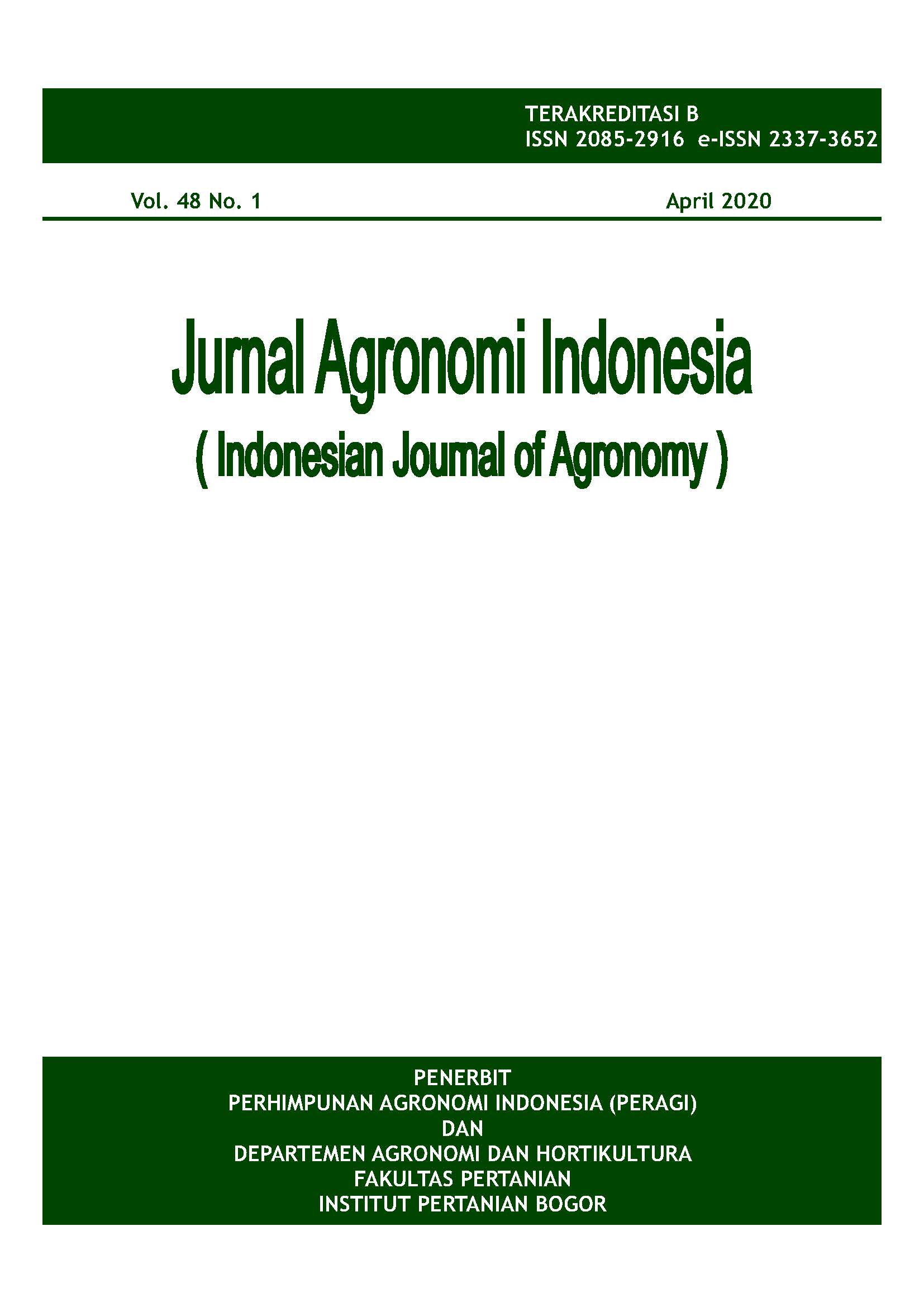Perubahan Perilaku Dormansi selama Proses Desikasi pada Benih Kacang Bambara (Vigna subterranea L. Verdc.)
Abstract
Bambara groundnut seeds often show unsynchronized and slow germination even though on newly harvested seeds. This might be due to the presence of seed dormancy. Therefore, the objective of this research was to obtain the information on seed dormancy and germination behaviour of bambara groundnut seeds during desiccation. The experiment was arranged in a nested design. Dormancy breaking treatments (untreated, mechanical scarification, soaking in 1% KNO3 for 2 hours, mechanical scarification followed by KNO3 soaking) were nested in each of the desiccation levels (fresh seeds with 54.7% moisture content (mc), desiccated seeds with 44.4%, 18.0%, 15.4%, and 12.1% mc). The results showed that newly harvested seeds were in dormant state. Seed desiccation did not increase the intensity of seed dormancy, even resulted in an increase in field emergence (at 30 days after planting) from 43.9% in fresh seeds to around 70% in dry seed (12-15% mc). Seed desiccation (from 44.4% mc to 12.1% mc) increased the field emergence, although it was inadequate to break the dormancy completely. Meanwhile, seed desiccation tended to increase the GA/ABA ratio, but the seed permeability was decreased. The fact showed that seed desiccation reduced the intensity of dormancy of bambara groundnut seed, therefore, it is suggested to modify the drying method in order to accelerate the increasing of GA/ABA ratio while keeping the testa permeable.
Keywords: after-ripening, GA/ABA ratio, hard seed, kacang bogor, permeability













